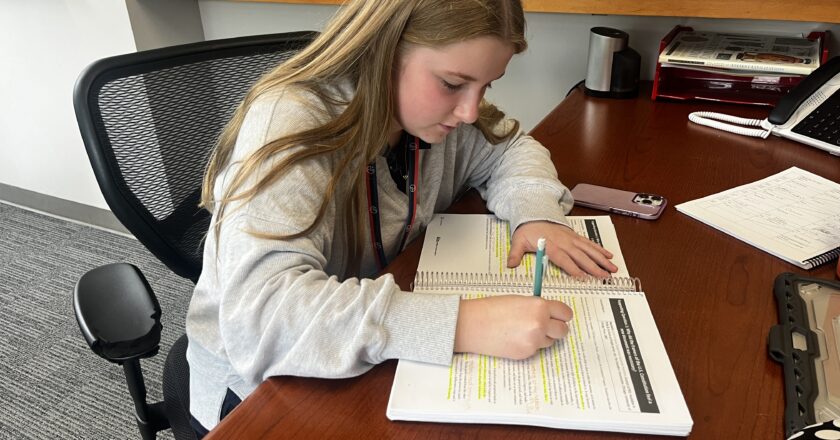For the 2024-2025 school year, GA transitioned back to primarily using paper-based materials in the classroom. In past school years, teachers have prioritized the use of technology for both in-class instruction and homework, meaning this transition marks a sharp change in the school environment.
Ultimately, I strongly believe that the shift to physical paper resources will prove beneficial to students’ overall wellbeing – the benefits of this transition outweigh the harms.
Although this change is most noticeable within the GA school community, the transition to paper is certainly a more widespread change. Many schools, both public and private, are in the process of switching to the more traditional “pencil and paper” method of instruction.
While GA teachers continue to use Canvas, email and other online resources as the primary modes of communication, many are making the decision to shift the physical work and instruction offline.
The goal of this change is to promote active listening and attention in the classroom; the constant use of technology has proven to be distracting to students. This change takes away the distractions of online games, shopping and internet articles. Additionally, getting away from the screen may prove beneficial for students with migraines or sensitives to blue light.
Carrying around paper textbooks, course books, and other assignments takes a physical toll on students’ backs; however, I strongly believe that the benefits of using paper generally outweigh the disadvantages. Handwriting is proven to foster greater knowledge retention than typing, further supporting the notion that screen and device use should be limited in the classroom.
Additionally, although technology is helpful, it is not perfect, and many students suffer from anxiety relating to technological malfunctions. Turning in assignments on paper instead of online prevents students from stress related to power outages, online crashes and computer glitches that prevent them from completing or submitting their assignments on time.
The pandemic and online learning exemplify the dangers of too much screen time for students. Spending 7-8 hours on a computer severely limits students’ attention span. In addition, the isolation that comes with screen time causes many individuals to stop spending time with their friends, family, and classmates.
Many students have differing opinions on the topic, as some believe that the limits placed on devices significantly change their classroom experience. However, others find the new policy to have less of an effect on their daily life.
“I lost my stylus in ninth grade and never decided to get a new one, so I’ve been using paper this entire time,” Evan Badami ‘26 said.
Before the policy change, I would have never imagined myself happy to carry around multiple textbooks and course books. Regardless, I feel the emphasis on paper handouts and assignments has awarded me fewer headaches. Additionally, I am able to organize my papers and assignments better than I would have been able to do on a screen.
Besides the benefits strictly limited to the classroom, there are many benefits on students’ health and wellness at home. It is all too common for students to work on their homework until they go to sleep, which in some cases, is very late. The reduction of blue light near when individuals go to sleep proves beneficial for sleep quality and health.
Sleep quality is a key factor in students’ performance during the school day, meaning getting away from screens could be even more beneficial to academic performance than ever thought before.
The move to paper based class materials is changing the way students learn, do work and organize their belongings both inside and outside of the classroom. Although the papers may be difficult to carry, overall the benefits of less screen time, such as fewer headaches and increased attention span, considerably outweigh the benefits of using screens.

